Sabina Speich’s Crochet Giantfood: A Playful Manifesto on Excess, Consumption, and Sustainability
Sabina Speich transforms crochet into cultural critique. Her oversized, handwoven food sculptures confront waste, consumerism, and our absurd appetites—textile art with humor and activism at its core.
The Seductive Nightmare of Consumption, Stitched in Yarn
It’s absurd. It’s hilarious. It’s grotesque.
A pile of greasy fries sprawled across the floor, bloated with excess. A half-spilled cup of noodles, tangled in chaos.
Her work isn’t just about food—it’s about all consumption. It’s about us.
A monstrous pizza slice, its toppings bulging like unchecked cravings. But lean in—these aren’t leftovers from a gluttonous feast.
They’re meticulously crocheted.
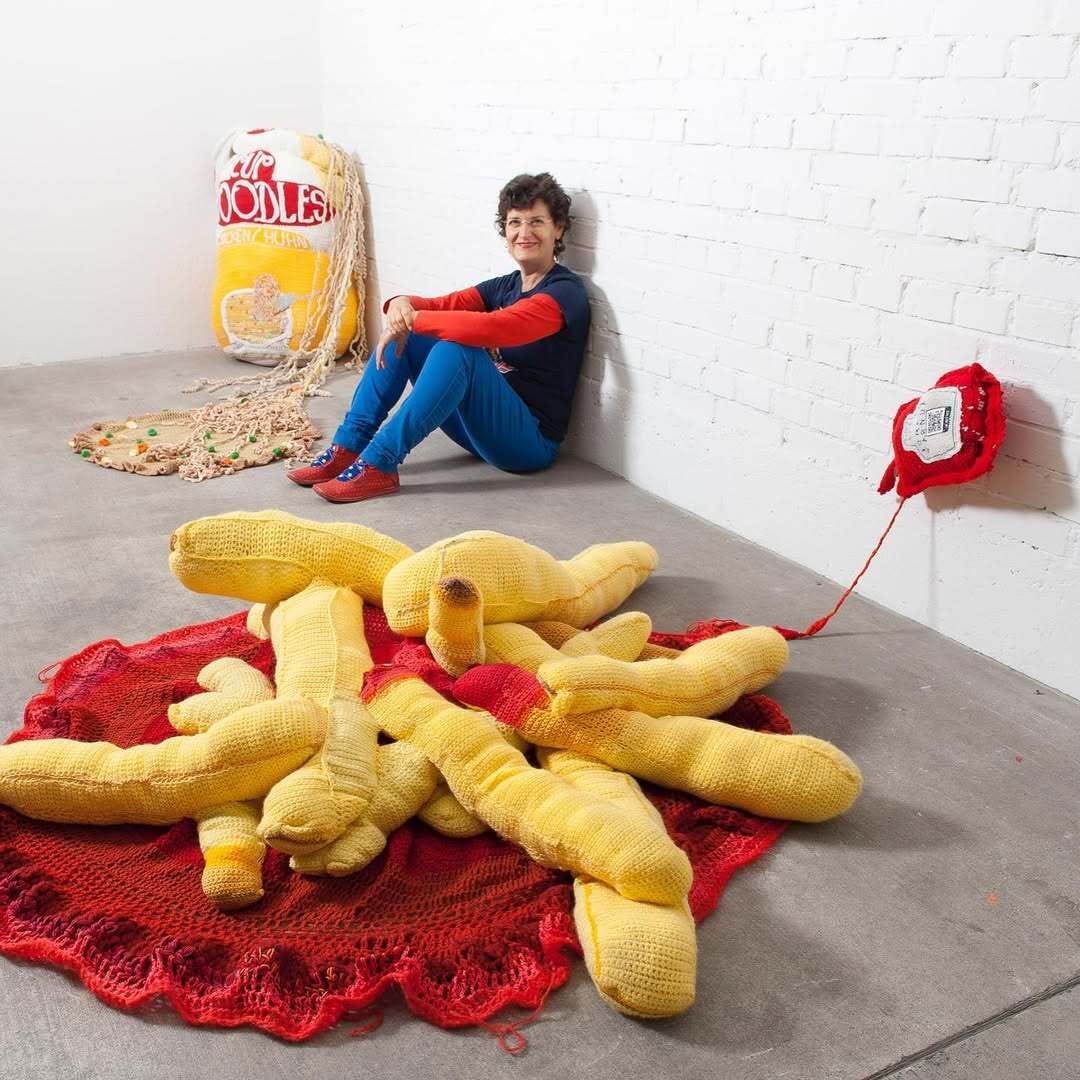
Sabina Speich’s Crochet Giantfood is delightful and disturbing. She doesn’t just recreate food—she distorts it, exaggerates it, forcing us to confront our appetites.
These oversized, handwoven sculptures sit between humor and horror, blurring the line between indulgence and grotesqueness.
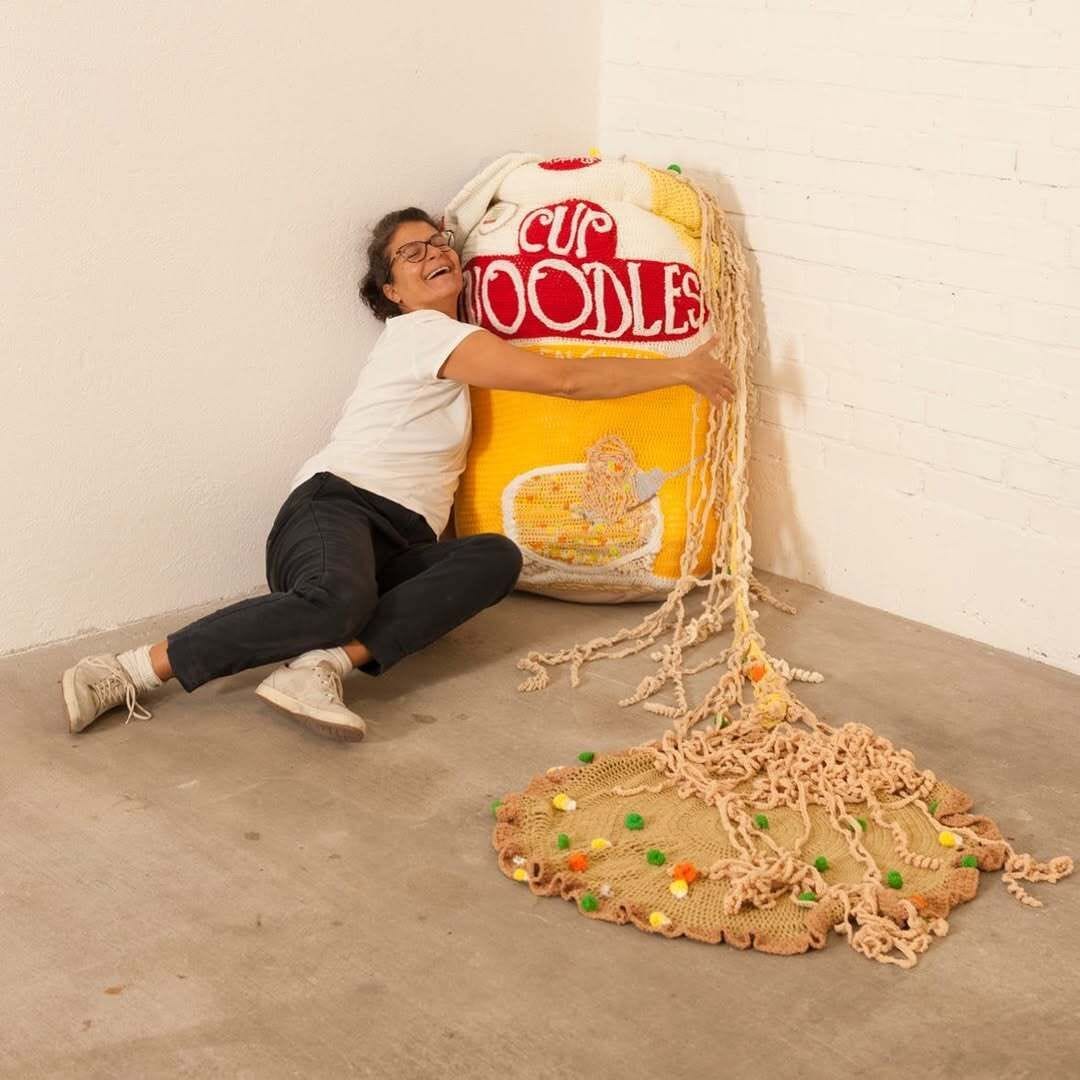
The Art of Amplification: When Scale Becomes a Statement
Speich, a Swiss multimedia artist, wields crochet—a craft tied to warmth and care—to expose mass production, fast food, and overconsumption.
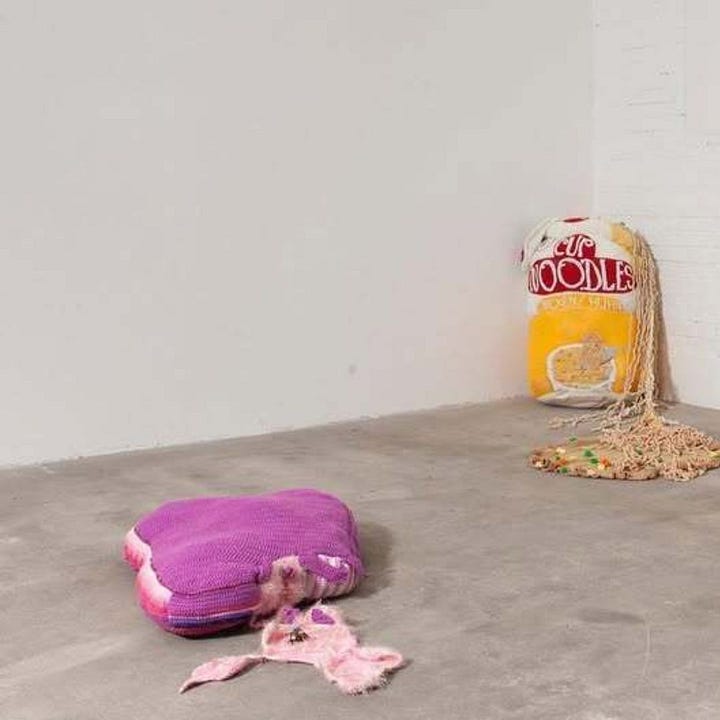

Enlarging everyday edibles into cartoonish excess, she reveals our contradictions:
How food waste exists while hunger persists.
How we worship convenience yet crave authenticity.
How our appetites—both literal and capitalist—are insatiable.
Her practice is rooted in sustainability. Using secondhand yarn donated by her online community, she doesn’t just depict waste—she repurposes it.
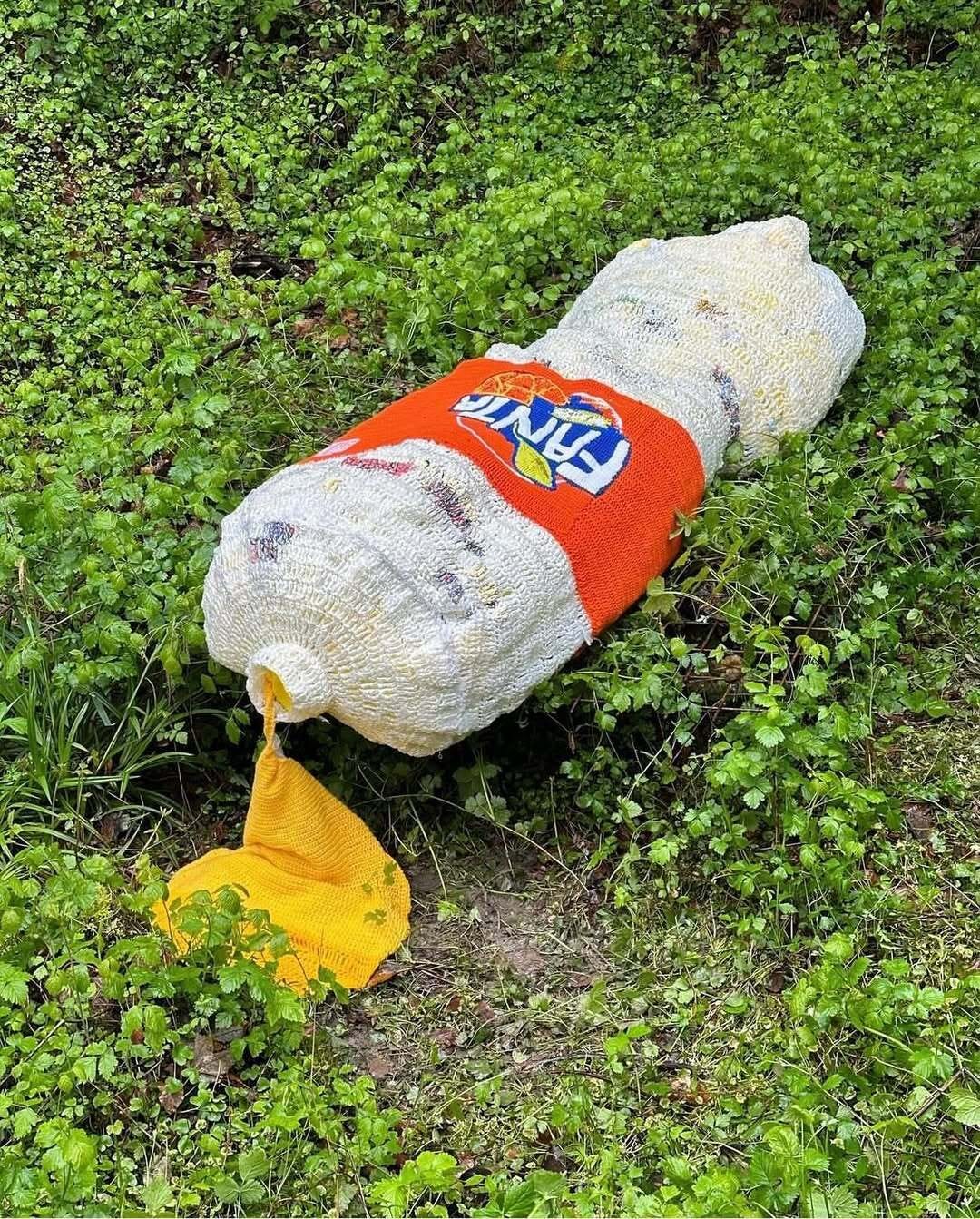
The irony? Her playful textures contrast starkly with the harsh realities of consumer culture.
Beyond Textile Art: The Politics of Play
At first glance, Crochet Giantfood is whimsical, even funny. But humor, in Speich’s hands, is a Trojan horse for critique. Her work asks: Why do we find joy in images of excess?
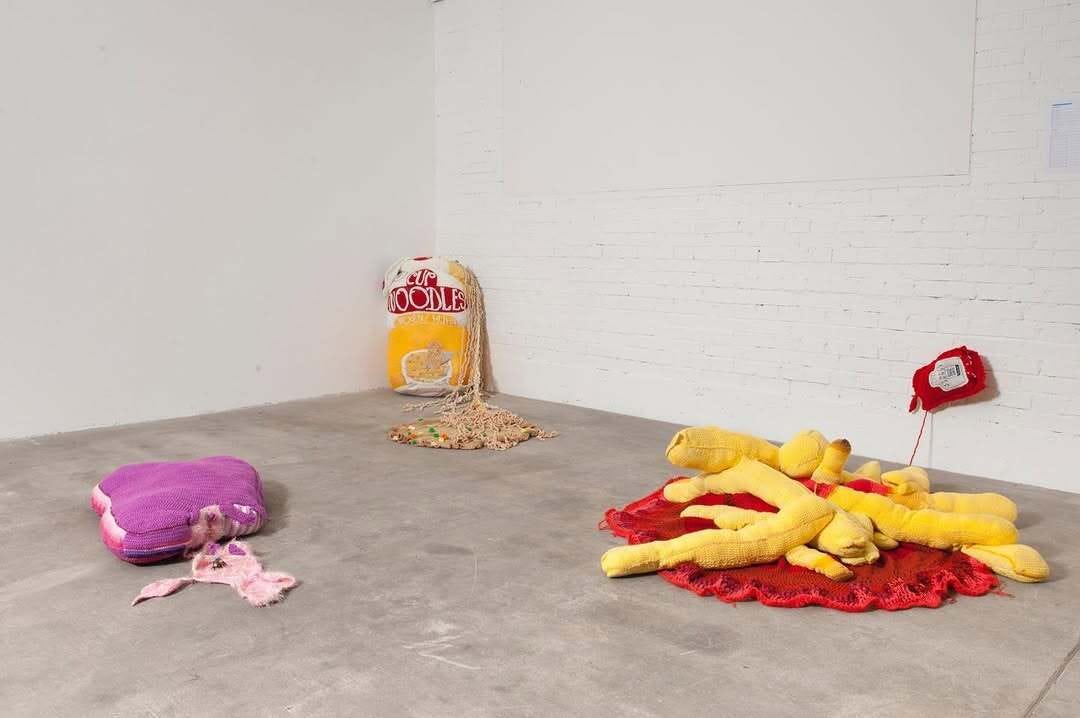

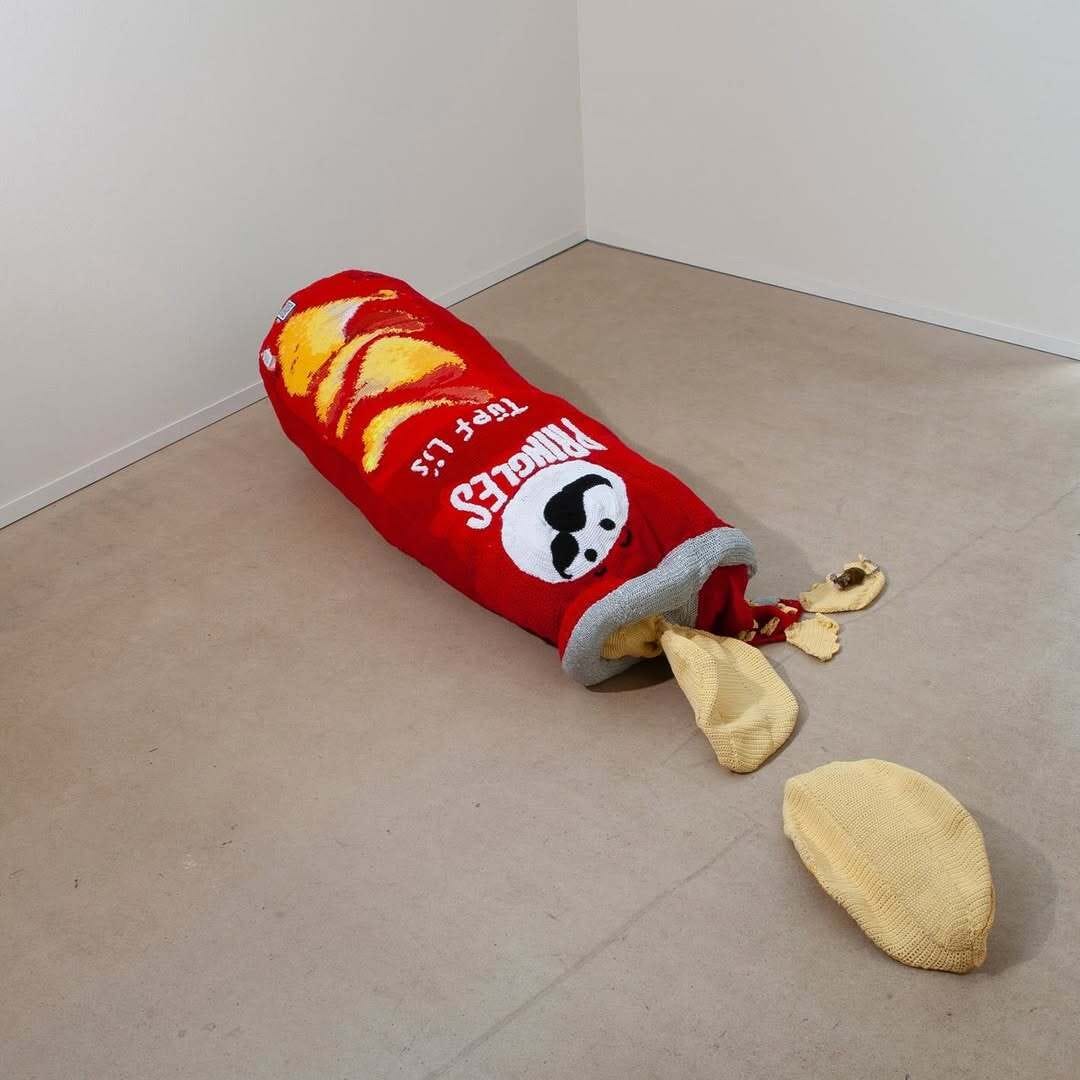
Fast food is engineered to be addictive—both in taste and branding.
Speich hijacks this seduction, swapping glossy wrappers for yarn, synthetic textures for soft fibers. The result? An invitation to touch, interact, and rethink our habits.
Her oversized noodles and spilling M&Ms mimic the culture of excess but strip it of its artificial allure.
What’s left is something strangely intimate, handmade, and painfully slow in a world obsessed with speed.
Why This Work Matters Now
Speich’s work sits at the crossroads of contemporary art, environmental activism, and craft.
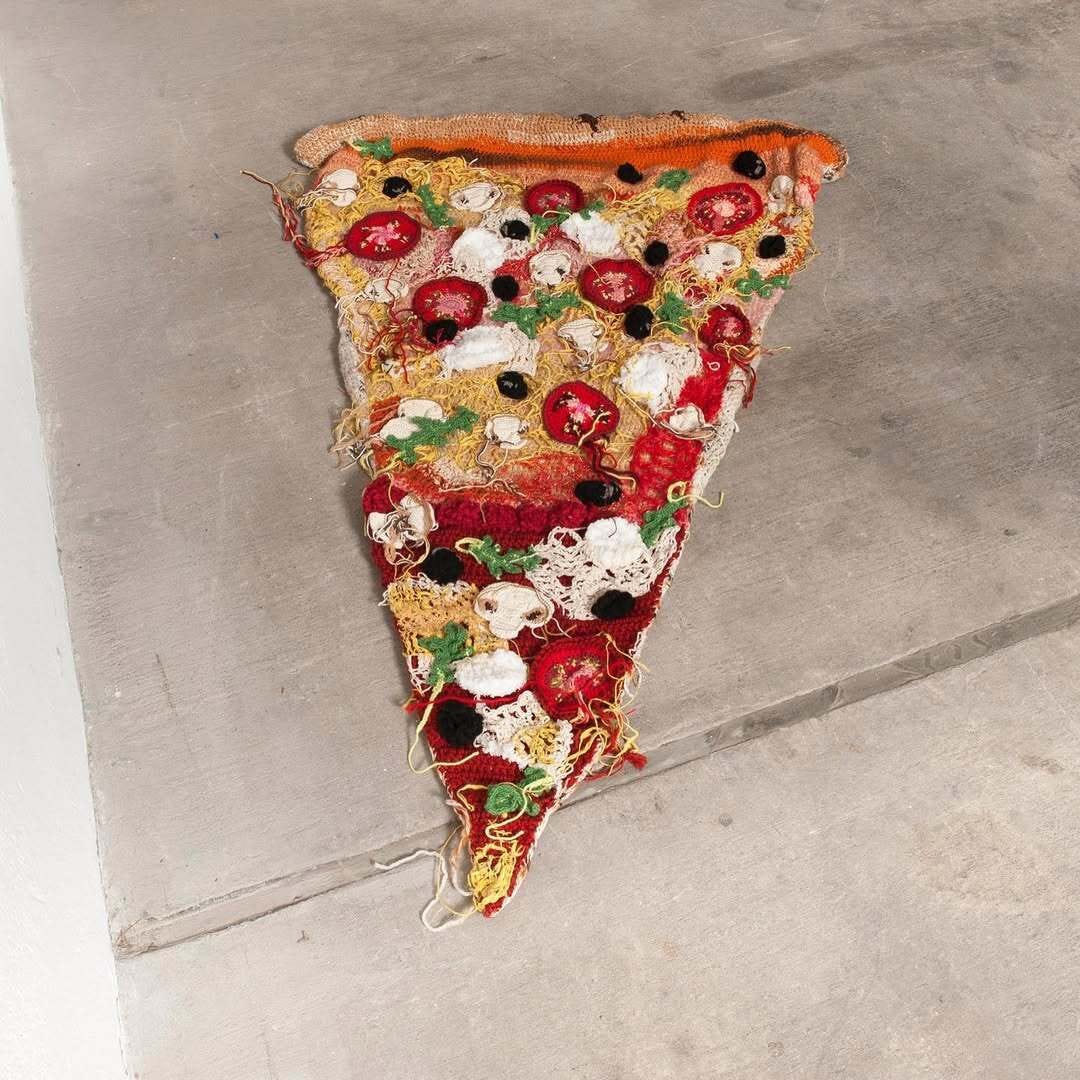
As textile art gains momentum in the fine art world, her sculptures push the boundaries of the medium.
She taps into multiple layers of meaning:
Material & Process: Upcycled textiles turn waste into a statement.
Scale & Spectacle: Exaggeration forces us to reconsider the familiar.
Interactivity: Hidden barcodes link to process videos and environmental initiatives, engaging viewers beyond aesthetics.
Her work isn’t just about food—it’s about all consumption. It’s about us.
Speich weaponizes softness. She takes a craft historically dismissed as “women’s work” and turns it into sharp social commentary.
Her food won’t rot, won’t expire, won’t nourish. It just sits there—waiting for us to reckon with what it represents.
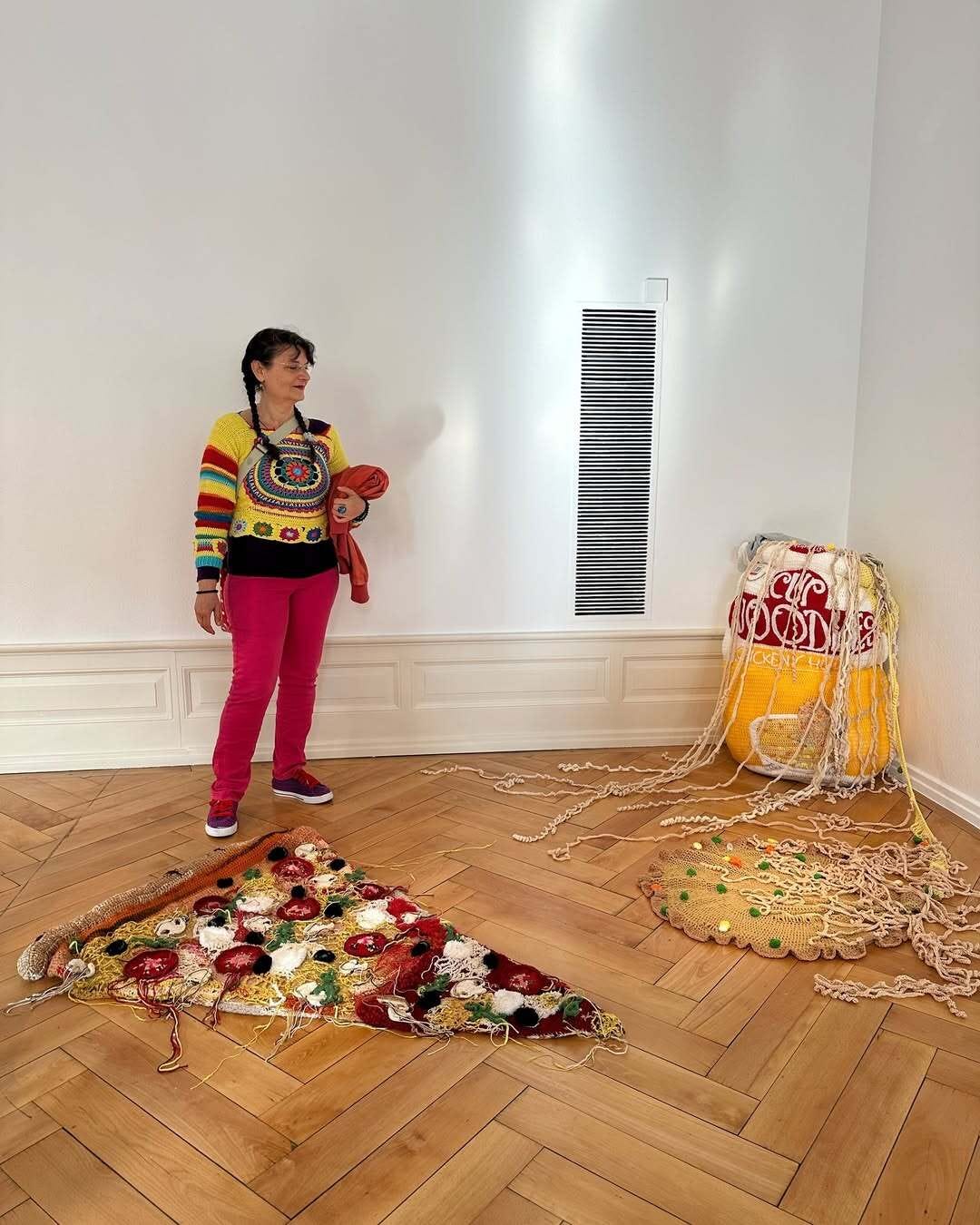
And that might be her sharpest critique of all.
Follow Sabina Speich on Instagram
Sabina Speich on Substack
This Artist was recommended by David Rosado and Pikazer0 Art Agency Portugal.





WOW 🙏🏽 i love love love this text very much ❣️ thank YOU sooo much, this is way cool 🥰💖🫶🏽